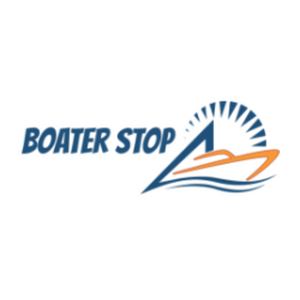- $80.00 off
Garmin
Garmin TD 50 Touchscreen Display [010-02139-10]
$619.99$699.99Unit price /UnavailableLow stock (2 units) Garmin
Garmin GMI 20 Marine Instrument Display [010-01140-00]
$442.99$499.99Unit price /UnavailableIn stock (8 units)Garmin
Garmin GMI Wired Start Pack 52 [010-01248-80]
$1,061.99$1,199.99Unit price /UnavailableVery low stock (1 unit)Raymarine
Raymarine I50 Speed Package w/ST900/P120 Thru-Hull [T70583]
$639.99$649.99Unit price /UnavailableGarmin
Garmin GNX Wireless Sail Pack 52 [010-01616-40]
$1,283.99$1,449.99Unit price /UnavailableVery low stock (1 unit)Scotty Seeker
$1,475.00Unit price /UnavailableVery low stock (1 unit)Raymarine
Raymarine i50/i60 Wind, Speed, Depth System Pack w/Transducers [T70584]
$1,650.99$1,715.99Unit price /UnavailableIn stock (7 units)Raymarine
Raymarinei50 SeaTalkng Instruments - Tridata w/Thru-Hull Transducer [T70582]
$958.99$974.99Unit price /UnavailableRaymarine
Raymarine RSW Wired - Smart Performance Wind Transducer - Short Arm w/30M Cable [E70670]
$919.99$934.99Unit price /UnavailableIn stock (5 units)Raymarine
Raymarine i40 Depth Display System [E70064]
$250.99$259.99Unit price /UnavailableIn stock (5 units)Garmin
Garmin GNX Wired Sail Pack 52 [010-01248-70]
$1,283.99$1,449.99Unit price /UnavailableVery low stock (1 unit)Maretron
Maretron DSM570 5.7" High Resolution Color Display w/Black Enclosure [DSM570-01]
$1,057.99$1,195.00Unit price /UnavailableIn stock (8 units)Schaefer Marine
Schaefer Hawk Race f/Single Handed Racing Dinghies [H006F00]
$61.99$80.65Unit price /UnavailableLow stock (3 units)Veratron
Veratron Navigation Kit f/Sail, Wind Sensor, Transducer, Display Cables [A2C1352150002]
$2,086.92$2,318.80Unit price /UnavailableSchaefer Marine
Schaefer Great Hawk Wind Indicator f/Boats From 8M - 20M [H002F00]
$86.99$113.95Unit price /UnavailableLow stock (2 units)Maretron
Maretron 4.1" High Bright Color Display - Black [DSM410-01]
$609.99$645.00Unit price /UnavailableIn stock (4 units)Davis Instruments
Davis Air-Flow Tels - Set of 14 [950]
$17.99$19.99Unit price /UnavailableIn stock (99 units)Raymarine
Raymarine i50 Depth Display System w/Thru-Hull Transducer [E70148]
$529.99$549.99Unit price /UnavailableLow stock (3 units)Raymarine
Raymarine i40 Depth Display System w/Transom Mount Transducer [E70143]
$351.99$364.99Unit price /UnavailableRaymarine
Raymarine i40 Depth Display System w/Thru-Hull Transducer [E70142]
$328.99$340.99Unit price /UnavailableIn stock (8 units)















![Garmin GNX Wired Sail Pack 52 [010-01248-70]](http://www.boaterstop.com/cdn/shop/files/86209XL.jpg?v=1686497763&width=460)
![SI-TEX Color LCD NMEA 0183 Repeater [KRD-10]](http://www.boaterstop.com/cdn/shop/files/83338XL.jpg?v=1686486746&width=460)
![Maretron DSM570 5.7" High Resolution Color Display w/Black Enclosure [DSM570-01]](http://www.boaterstop.com/cdn/shop/files/80762XL.jpg?v=1686476263&width=460)
![Schaefer Hawk Race f/Single Handed Racing Dinghies [H006F00]](http://www.boaterstop.com/cdn/shop/files/76412XL.jpg?v=1686460928&width=460)
![Veratron Navigation Kit f/Sail, Wind Sensor, Transducer, Display Cables [A2C1352150002]](http://www.boaterstop.com/cdn/shop/files/76240XL.jpg?v=1686460199&width=460)
![Garmin GNX Wired Sail Pack 43 [010-01248-60]](http://www.boaterstop.com/cdn/shop/files/76216XL.jpg?v=1686460120&width=460)
![Schaefer Great Hawk Wind Indicator f/Boats From 8M - 20M [H002F00]](http://www.boaterstop.com/cdn/shop/files/74698XL.jpg?v=1686452926&width=460)
![Maretron 4.1" High Bright Color Display - Black [DSM410-01]](http://www.boaterstop.com/cdn/shop/files/66386XL.jpg?v=1686426367&width=460)
![Davis Air-Flow Tels - Set of 14 [950]](http://www.boaterstop.com/cdn/shop/files/52131XL.jpg?v=1686390360&width=460)
![Raymarine i50 Depth Display System w/Thru-Hull Transducer [E70148]](http://www.boaterstop.com/cdn/shop/files/46059XL.jpg?v=1686374691&width=460)
![Raymarine i40 Depth Display System w/Transom Mount Transducer [E70143]](http://www.boaterstop.com/cdn/shop/files/46051XL.jpg?v=1686374627&width=460)
![Raymarine i40 Depth Display System w/Thru-Hull Transducer [E70142]](http://www.boaterstop.com/cdn/shop/files/46050XL.jpg?v=1686374619&width=460)